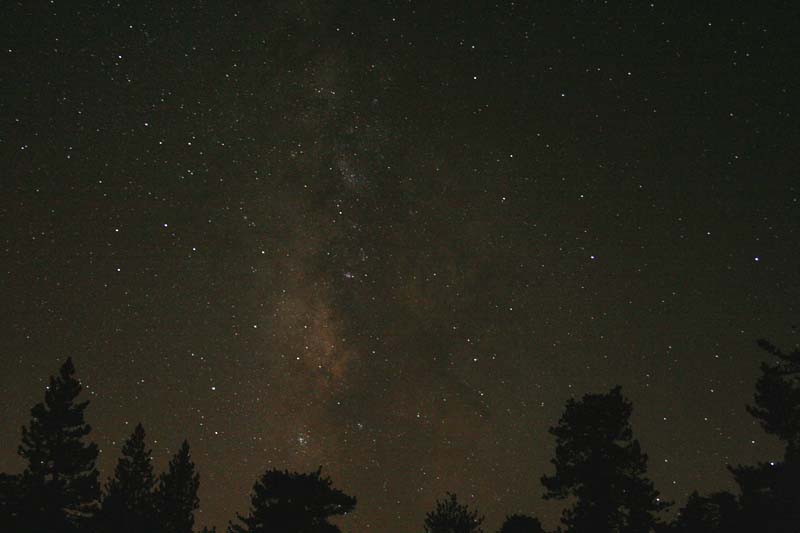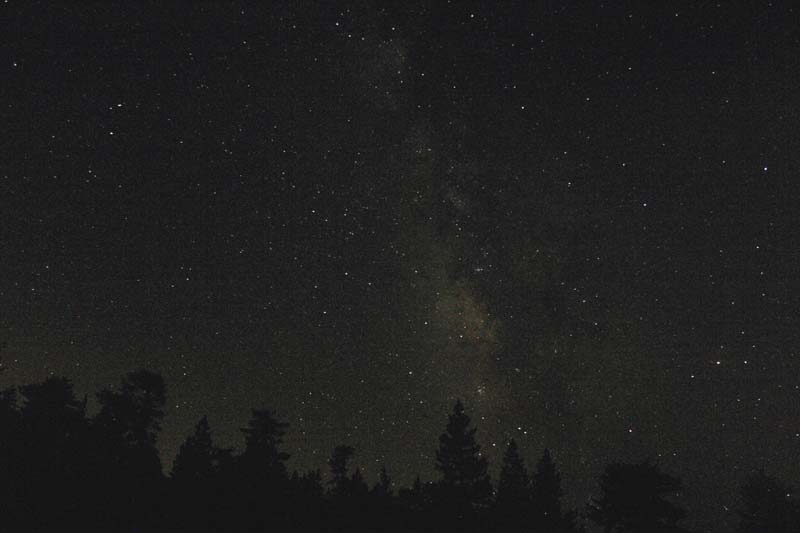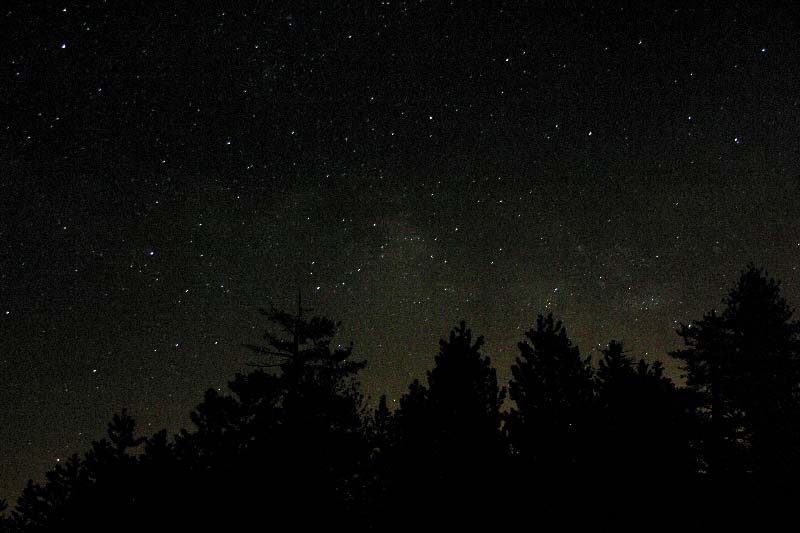2005-10-05:
Mt. Pinos, Los Padres National Forest, California: The image below
is a still-frame from the time-lapse movie showing the Milky Way "traveling" from
the south-east to south-west. This is my best Milky Way time-lapse
to date. To some extent, the improvements seen in this latest sequence
are the result of gaining experience in capturing (and tweaking) images.
However, most of the credit for this sequence can
be attributed to using a new camera (Canon Digital Rebel XT, aka EOS-350D).
I'm going to speculate that the EOS-350D's DIGIC II image processor
(versus the EOS-300's more-primitive DIGIC) is the main reason for
better picture quality. Improvements in lens quality and other electronics
may also be factors. The focal length for the frame below is "25
mm"; this is
a bit more "zoomed" than the 18 mm 2005-09-01 Mt Pinos capture
(below) or the Joshua
Tree capture on 2005-09-04. During the sequence you will note a
brief red-white "flash". This was caused by -- arrg!! --
someone's car pulling out of the dark-sky parking lot from which I
was photographing. It
must
be stressed that neither the
still below nor the Internet-friendly QuickTime movie can do justice
to the image fidelity of (especially) this time-lapse movie.
Watching a 15.00 Mbps (21.5 MB) MPEG2 file on a 19-inch ViewSonic LCD
monitor
is a spectacular experience! I can only imagine how good this sequence
may look on a large theater screen.


(below) 2005-05-11: Mt. Pinos, Los Padres National Forest, California: The image below is a still-frame from a time-lapse movie showing the Milky Way rising from the East. This time-lapse sequence was taken from the Nordic Base Station, elevation 8,300 ft. (2530 meters).
Sample movie file available on request.
